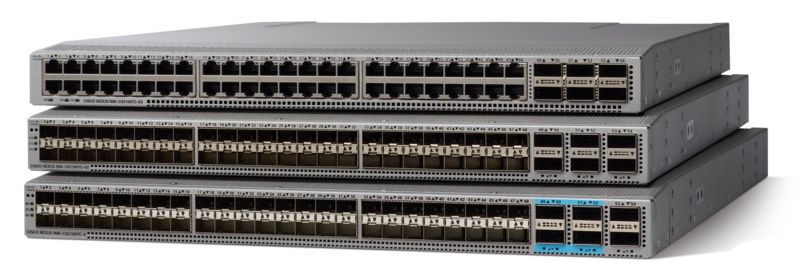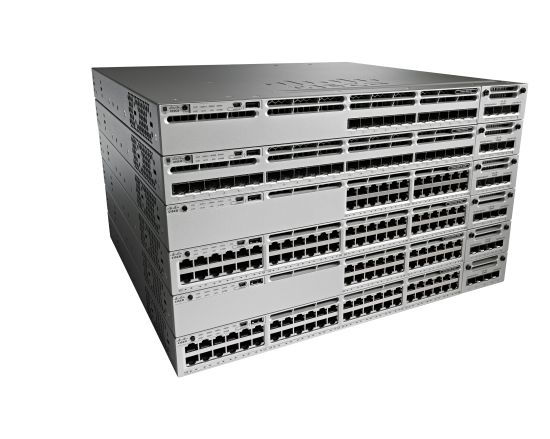An edge switch, also known as an access switch, is a networking device typically deployed at the edge or access layer of a network topology. It serves as the primary point of connection for end-user devices and provides access to network resources, such as servers, storage devices, and the internet.
Key Functions and Characteristics:
Device Connectivity: The primary function of an edge switch is to connect end-user devices, such as computers, printers, IP phones, and wireless access points, to the network infrastructure. Each end-user device typically connects to an individual port on the edge switch.
Port Density: Edge switches often feature a high port density to accommodate the numerous end-user devices connected to the network. They may offer a mix of Ethernet ports with various speeds, including Fast Ethernet (10/100 Mbps) and Gigabit Ethernet (1 Gbps), to meet the diverse connectivity requirements of modern networks.
Power over Ethernet (PoE): Many edge switches support Power over Ethernet (PoE) or PoE+ standards, allowing them to deliver power to connected devices, such as IP phones, wireless access points, and security cameras, over the same Ethernet cable used for data transmission. This eliminates the need for separate power sources and simplifies device deployment.
VLAN Support: Edge switches often support Virtual LANs (VLANs), allowing network administrators to segment the network into logical domains for improved security, performance, and management. VLAN support enables the isolation of traffic between different groups of devices while sharing the same physical network infrastructure.
Quality of Service (QoS): Edge switches may include QoS features to prioritize certain types of traffic over others, ensuring optimal performance for critical applications and services. QoS mechanisms enable administrators to allocate bandwidth based on predefined policies and traffic priorities.
Security Features: Edge switches often incorporate security features such as Access Control Lists (ACLs), port security, and DHCP snooping to protect the network against unauthorized access, data breaches, and malicious activities. These features help enforce security policies and mitigate potential security threats at the network edge.
Importance in Network Architecture:
The edge switch serves as the gateway between end-user devices and the broader network infrastructure, providing connectivity, security, and management functions at the network edge. Its strategic placement ensures that end-user devices can access network resources while maintaining security and performance standards.
Conclusion:
In conclusion, an edge switch is a critical component of network infrastructure, serving as the primary interface between end-user devices and the network. With its connectivity, PoE support, VLAN capabilities, QoS features, and security mechanisms, the edge switch plays a vital role in enabling seamless communication, access control, and resource management at the network edge.

1
Cisco Catalyst 3850 Series:

Cisco is a major player in the networking industry, and the Catalyst 3850 series is known for its advanced features, stacking capabilities, and high performance.
2
Cisco Catalyst 9300 Series:

Cisco Catalyst 9300 Series: Another popular series from Cisco, offering advanced features and capabilities suitable for various network environments. 9300 offers modular uplinks, support for advanced routing protocols, and is designed for enterprise networks.
3
HPE Aruba CX 6200 Series

Aruba’s CX 6200 series switches provide a combination of performance, security, and ease of management, making them ideal for edge deployments in small to medium-sized enterprises. They offer PoE support, robust security features, and integration with Aruba’s network management platform.
4
Juniper Networks EX Series

Juniper’s EX series switches are known for their high-performance and scalability, catering to the needs of enterprise networks.
Quickspecs:
5
Cisco Catalyst 3650X & 3750X Series:

Cisco is a major player in the networking industry, and the Catalyst 3560x and 3750Xseries is known for its advanced features, stacking capabilities, and high performance.
6
Extreme Networks X440-G2 Switches

Known for its stacking capabilities and advanced features, the Summit X440-G2 series is designed for demanding network environments.
Product Datasheet:
7
Dell Networking N2000 Series

The N2000 switch series offers a power-efficient Gigabit Ethernet (GbE) network-access switching solution with integrated 10GbE uplinks. With high-performance capabilities and wire-speed performance, utilizing a non-blocking architecture to easily handle unexpected traffic loads, the switches offer simple management and scalability via an 84Gbps (full-duplex) high availability stacking architecture that allows management of up to eight* switches from a single IP address
8
HPE Aruba Networking 2930 Series

Aruba’s 2930M and 2930F series switches provide a combination of performance, security, and ease of management, making them ideal for edge deployments in small to medium-sized enterprises. They offer PoE support, robust security features, and integration with Aruba’s network management platform.
Models and Datasheet:
HPE Aruba Networking 2930 Switch Series Datasheet (arubanetworks.com)
Models and Datasheet:
9
Cisco Catalyst 1000 Series

Cisco Catalyst 1000 Series Switches are fixed managed Gigabit Ethernet and Fast Ethernet enterprise-class Layer 2 switches designed for small businesses and branch offices. These are simple, flexible and secure switches ideal for out-of-the-wiring-closet and critical Internet of Things (IoT) deployments.
Models and Datasheet:
10
Ubiquiti UniFi Professional Series

Ubiquiti’s UniFi Switches are popular for their ease of use and management, often utilized in deployments with UniFi networking gear.
Models and Datasheet: